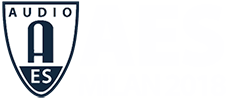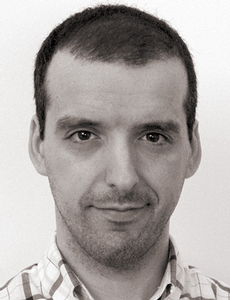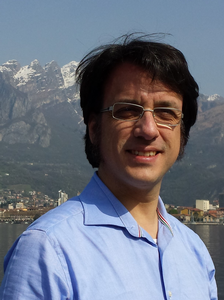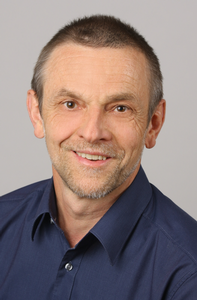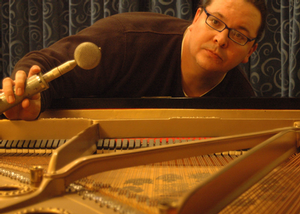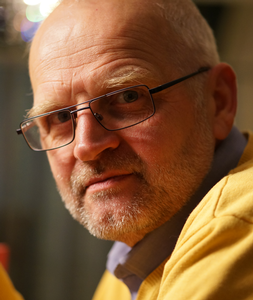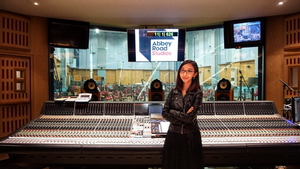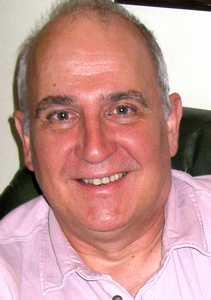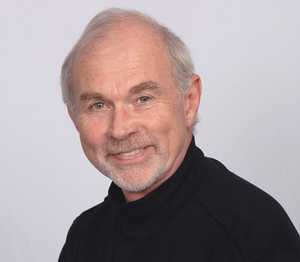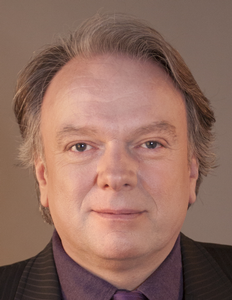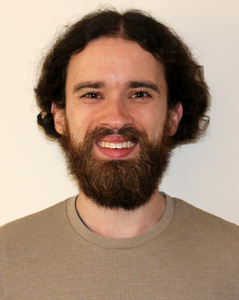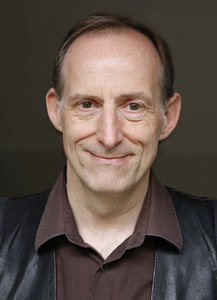AES Milan 2018
The Power of Sound Track Event Details
Wednesday, May 23, 09:15 — 10:15 (Scala 2)
Tutorial: T01 - Crash Course in 3D Audio
Presenter:Nuno Fonseca, Polytechnic Institute of Leiria - Leiria, Portugal; Sound Particles
A little confused with all the new 3D formats out there? Although most 3D audio concepts already exist for decades, the interest in 3D audio has increased in recent years, with the new immersive formats for cinema or the rebirth of Virtual Reality (VR). This tutorial will present the most common 3D audio concepts, formats, and technologies allowing you to finally understand buzzwords like Ambisonics/HOA, Binaural, HRTF/HRIR, channel-based audio, object-based audio, Dolby Atmos, among others.
Wednesday, May 23, 14:15 — 16:15 (Scala 1)
Tutorial: T05 - Tune Your Studio-Acoustic Analysis of Small Rooms for Music
Presenter:Lorenzo Rizzi, Suono e Vita - Acoustic Engineering - Lecco, Italy
The tutorial will talk about acoustic quality issues in small rooms for music. Focusing on internal acoustic quality (time response, frequency response, acoustic parameters) it will be rich in practical examples, useful for sound engineers, musicians and acousticians to focus on the small-room issues.
Wednesday, May 23, 16:30 — 18:00 (Scala 1)
Tutorial: T07 - Benefiting from New Loudspeaker Standards
Presenter:Wolfgang Klippel, Klippel GmbH - Dresden, Germany
This tutorial focuses on the development of new IEC standards, addressing conventional and modern measurement techniques applicable to all kinds of transducers, active and passive loudspeakers and other sound reproduction systems. The first proposed standard (IEC 60268-21) describes important acoustical measurements for evaluating the generated sound field and signal distortion. The second standard (IEC 60268-22) is dedicated to the measurement of electrical and mechanical state variables (e.g. displacement), the identification of lumped and distributed parameters (e.g. T/S) and long-term testing to assess power handling, thermal capabilities, product reliability and climate impact. The third standard(IEC 63034) addresses the particularities of micro-speakers used in mobile and other personal audio devices. The tutorial gives a deeper insight into the background, theory and practical know-how behind those standards.
 | This session is presented in association with the AES Technical Committee on Loudspeakers and Headphones |
Thursday, May 24, 10:30 — 12:00 (Arena 3 & 4)
Tutorial: T11 - Total Timbre: Tools and Techniques for Tweaking and Transforming Tone
Presenter:Alex Case, University of Massachusetts Lowell - Lowell, MA, USA
Recordists shape timbre through the coordinated use of several different signal processors. While equalization is a great starting point, the greatest tonal flexibility comes from strategic use of additional timbre-modifying signal processors: compression, delay, reverb, distortion, and pitch shift. This tutorial defines the timbre-driving possibilities of the full set of studio effects, connecting key FX parameters to their relevant timbral properties, with audio examples that reveal the results. This multi-effect approach to timbre enables you to extract more from the effects you already use, and empowers you to get the exact tones you want.
Thursday, May 24, 10:45 — 12:15 (Lobby)
Workshop: W10 - New Surround and Immersive Recordings
Presenters:Jim Anderson, Anderson Audio NY - New York, NY, USA; Clive Davis Institute of Recorded Music, New York University - New York, NY, USA
Ulrike Schwarz, Anderson Audio NY - New York, NY, USA
Jim Anderson and Ulrike Schwarz have spent the past year recording and mixing music in high resolution and in immersive formats from New York to Norway to Havana. This presentation will highlight that work.
 | This session is presented in association with the AES Technical Committee on Recording Technology and Practices and AES Technical Committee on Spatial Audio and AES Technical Committee on High Resolution Audio |
Thursday, May 24, 10:45 — 12:15 (Scala 1)
Tutorial: T12 - Acoustic Enhancement Systems
Presenter:Ben Kok, BEN KOK - acoustic consulting - Uden, The Netherlands
Acoustic enhancement systems can be considered the ultimate in electro acoustics, as these systems influence the perceived natural acoustics of a given space. Due its complex nature-and the interaction with subjective perception-these systems often are considered mystic or even a "black art." This tutorial will focus on how subjective and objective room acoustic qualities and parameters can be influenced with use of acoustic enhancement and how this relates to the requirements and design criteria for such a system.
In the presentation it is assumed that the attendees already have a basic knowledge of auditoria acoustics and acoustic enhancement systems, or at least have read the feature on acoustic enhancement by Francis Rumsey in JAES, Vol 26, No.6, 2014 June.
 | This session is presented in association with the AES Technical Committee on Acoustics and Sound Reinforcement |
Thursday, May 24, 10:45 — 12:15 (Scala 3)
Tutorial: T13 - Perceptual and Physical Evaluation of Guitar Loudspeakers
Presenter:Wolfgang Klippel, Klippel GmbH - Dresden, Germany
Loudspeaker and headphones generate distortion in the reproduced sound that can be assessed by objective measurements based on a physical or perceptual model or just by a subjective evaluation performed in systematic listening tests. This tutorial gives an overview on the various techniques and discusses the way how measurement and listening can be combined by auralization techniques to give a more reliable and comprehensive picture on the quality of the sound reproduction. The separation of signal distortion in speech signals allows to assess signal distortion which are for most stimuli below the audibility threshold. Further analysis of the separated distortion signals gives clues to identify the physical root cause of loudspeaker defects which is very crucial for fixing design problems.
Thursday, May 24, 12:30 — 13:15 (Lobby)
Tutorial: T14 - Music Is the Universal Language
Presenter:Fei Yu, Dream Studios - China; U.S
Music supervisor and music producer Fei Yu works on Chinese video games and movies for the last 8 years. During the work collaborating with Western composers, she has her unique perspective on this new form of international collaboration.
This event will discuss the critically acclaimed score to NetEase Games’ "Revelation," the popular Chinese fantasy MMORPG that will soon be released internationally. As one of the first Chinese games to be scored by a westerner for the emerging Chinese video game market, we will show, by using musical examples, a way to work on this Chinese project. We will also talk about the recording techniques for projects like the movie Born In China that uses Chinese instruments—how to balance the sound, how to communicate with composer, etc.
Thursday, May 24, 13:15 — 14:30 (Arena 3 & 4)
Workshop: W13 - Object-Based Audio Broadcasting: Practical Aspects
Chair:Matthieu Parmentier, francetélévisions - Paris, France
Panelists:
Dominique Brulhart, Merging Technologies - Puidoux, Switzerland
Rupert Brun, Fraunhofer IIS - Erlangen, Germany
Christophe Chabanne, Dolby Laboratories - Valbonne, France
Michael Kratschmer, Fraunhofer Institute for Integrated Circuits IIS - Erlangen, Germany
Scott Norcross, Dolby Laboratories - San Francisco, CA, USA
This workshop will offer a state of the art of object-based audio for live broadcasting and post-production. The discussion will underline the role of the Audio Definition Model as an open format for production exchange.
Thursday, May 24, 15:00 — 16:30 (Scala 1)
Workshop: W17 - Power Amplification for High Resolution Audio
Presenter:John Dawson, Jade Electronics Ltd - Cambridge, UK
Driving modern passive loudspeakers to realistic levels without audible distortion can be surprisingly demanding—more so when the source is high resolution audio. And, although the peak power levels are much lower, achieving full dynamic range with headphones can also present tricky design problems. This tutorial reviews the various types of linear amplifier—particularly classes A, AB, B, D, G and H - and examines some of the trade offs involved in designing and implementing some recent commercial designs for both speakers and headphones. A number of the author's measurements of real products—not all of them good—will be shown.
 | This session is presented in association with the AES Technical Committee on High Resolution Audio |
Friday, May 25, 09:30 — 10:30 (Lobby)
Workshop: W22 - 10 Years PLOUD in Europe—The Past, Present and Future
Presenters:Florian Camerer, ORF - Austrian TV - Vienna, Austria; EBU - European Broadcasting Union
Eelco Grimm, HKU University of the Arts - Utrecht, Netherlands; Grimm Audio - Eindhoven, The Netherlands
Matthieu Parmentier, francetélévisions - Paris, France
In 2008, the European loudness group PLOUD was founded within the EBU, the European Broadcasting Union. A dedicated tribe of audio enthusiasts set out to conquer peak normalization and its detrimental effects on basically everything, but specifically on audio quality and listener satisfaction. Much has been been achieved in the 10 years since its gestation—but there remain a few loose ends; this was to be expected during such a fundamental change of the way audio is treated.
Florian Camerer, Eelco Grimm, and Matthieu Parmentier are all core members of PLOUD and share different aspects of the work done, being done and to be done.
Florian in his role as the chairman of PLOUD is giving a brief overview of the major changes that have already happened and are now well established. Loudness normalization is now the norm in TV, but other areas in broadcasting are still lagging behind, most notably Radio. An outlook will be given on the most burning issues in this area, under the light of the recent work of AES on Recommended Practices for Streaming.
Eelco will offer a brief update about the work on Loudness in cinema. Topics that will be touched are the relationship between overall electric loudness and the dialog level, some data about acoustic playback levels of movies and the master fader level setting at film festivals, and efforts to come to a new standard for trailers and commercials.
Matthieu will present a view on the activities of France Televisions, also targeting the tricky terrain of loudness in an object-based production environment
Friday, May 25, 11:00 — 12:00 (Scala 3)
Workshop: W23 - AES67 in Real World Applications
Presenters:Claudio Becker-Foss, DirectOut GmbH - Mittweida, Germany
Andreas Hildebrand, ALC NetworX GmbH - Munich, Germany
Nicolas Sturmel, Merging Technologies - Puidoux, Switzerland
Since the publication of AES67 and its recent adoption by the ST 2110 media over IP standard, we see a growing number of installations and studio built around this standard. This workshop and Q&A session will focus on practical aspects of using AES67 and ST 2110-30 in the field: what are the benefits of using AES67? What are the difficulties? What should I do / not do, when configuring my network? Panelists experienced in real-world applications will provide valuable insights and share opinions on the importance of AES67 and its role as part of ST 2110 for the wider broadcast market.
 | This session is presented in association with the AES Technical Committee on Network Audio Systems |
Friday, May 25, 11:15 — 12:15 (Arena 3 & 4)
Special Event: SE04 - Back to the Future, a Technology Project Review: Outdoor Sound Reinforcement of Symphony and Opera for Extremely Large Audiences
Presenter:David Scheirman, Bose Professional - Carlsbad, CA USA
Serving audiences up to 200,000 persons for outdoor operatic and symphonic programs, a fully-distributed portable sound reinforcement system was deployed in public parks throughout New York City including Central Park. Supporting onstage sound from a tensile-membrane acoustical shell designed in a 36m (118 ft) wide and 21m (68 ft) high pyramid-like structure for the US $3.385M outdoor music pavilion, 24 battery-powered, digitally-delayed portable loudspeaker towers received wireless transmissions from a centrally-located mixing position to cover asymmetrical audience areas. A 24m (78 ft) wide stage area was served with only seven microphones. From 1991-95, the author led a team to deploy and operate this futuristic outdoor sound reinforcement system, pioneering innovative and advanced technologies now taken for granted. System design attributes and operating principles are detailed.
Friday, May 25, 12:00 — 13:30 (Scala 3)
Workshop: W25 - The Challenge of Loudspeaker Integration in Automotive Audio Applications
Presenter:Alfred Svobodnik, MVOID Group - Karlsruhe, Germany; Wien, Austria
The integration of loudspeakers into a vehicle, both in terms of acoustical and mechanical aspects, is a highly challenging topic. Parasitic vibrations of panels excited by the loudspeaker can lead to significant deterioration of the sound quality. Acoustical short-circuits and Helmholtz resonances are another potential source for performance degradation. This workshop aims to discuss the major challenges of automotive loudspeaker packaging and possible solutions to improve the acoustical quality.
 | This session is presented in association with the AES Technical Committee on Automotive Audio |
Friday, May 25, 15:00 — 16:30 (Arena 3 & 4)
Workshop: W27 - Artificial Intelligence in Your Audio
Chair:Jonathan Wyner, M Works Studios/iZotope/Berklee College of Music - Boston, MA, USA; M Works Mastering
Panelists:
Jonathan Bailey, iZotope
Joshua D. Reiss, Queen Mary University of London - London, UK
AI has been part of the listener's experience for many years . . . . now it is influencing the development of tools made for music production and music creation. We will look at how it is being used, the promise it holds in developing new tools and the challenges it presents for music engineers and producers.
 | This session is presented in association with the AES Technical Committee on Recording Technology and Practices |
Friday, May 25, 16:15 — 17:45 (Scala 3)
Tutorial: T25 - Live Sound Subwoofer System Optimization
Presenter:Adam J. Hill, University of Derby - Derby, Derbyshire, UK
There is little reason this day in age to accept undesirable low-frequency sound coverage in live sound reinforcement. The theories behind subwoofer system optimization are well-known within academia and various branches of industry, although this knowledge isn't always fully-translated into practical terms for end-users. This tutorial provides a comprehensive overview of how to achieve desirable low-frequency sound coverage including: subwoofer polar response control, array and cluster configuration, signal routing/processing options, performance stage effects, source decorrelation, acoustic barriers and perceptual considerations. The tutorial is suitable for practitioners, academics and students, alike, providing practical approaches to low-frequency sound control and highlighting recent technological advancements.
 | This session is presented in association with the AES Technical Committee on Acoustics and Sound Reinforcement |
Saturday, May 26, 10:30 — 12:00 (Scala 1)
Workshop: W30 - Involving Performers’ Creativity in Innovative Audio Research
Co-chairs:Jan Berg, Luleå University of Technology - Piteå, Sweden
Amandine Pras, University of Lethbridge - Lethbridge, Alberta, Canada
Panelists:
Valentin Bauer, Paris Conservatoire (CNSMDP) - Paris, France
Dimitri Soudoplatoff, CNSMDP - Paris, France
Petter Sundkvist, Luleå University of Technology - Piteå, Sweden
With a multidisciplinary panel of performers and researchers, this workshop highlights the benefits of examining the impact of sound engineers’ manipulations of acoustics and audio technology on musical performance and creative decisions. Based on previous studio and stage experiments that involved orchestra conductors and instrumentalists, we discuss novel research approaches that incorporate Audio in the emergent fields of Performance Science and Creative Cognition to study how performers are affected by sound, e.g. when monitoring in binaural to improvise in studio and when performing in venues with different acoustic conditions. Whereas performers’ feedback can inform the development of innovative audio technology, our studies can make musicians more aware of sound engineering possibilities and hall acoustics’ impact, also providing students with a broader perspective on artistic practices.
This workshop will be addressed to students, researchers and technology developers who want to discuss novel approaches to study the interconnections between technology/acoustics and musical performance/creativity.
Saturday, May 26, 13:30 — 14:30 (Lobby)
Workshop: W33 - The 5th Element-How a Sci-Fi Classic Sounds with a New 3D Audio Mix
Presenter:Tom Ammermann, New Audio Technology GmbH - Hamburg, Germany
The 5th Element it's certainly a milestone in Sci-Fi film history. Recently it was completely overworked doing a completely new film scan in 4k and mixing the whole audio elements again in Dolby Atmos and Headphone Surround 3D. This version was released in Germany as UHD Blu-ray and offers a fantastic new adventure of this great production form Luc Besson.
